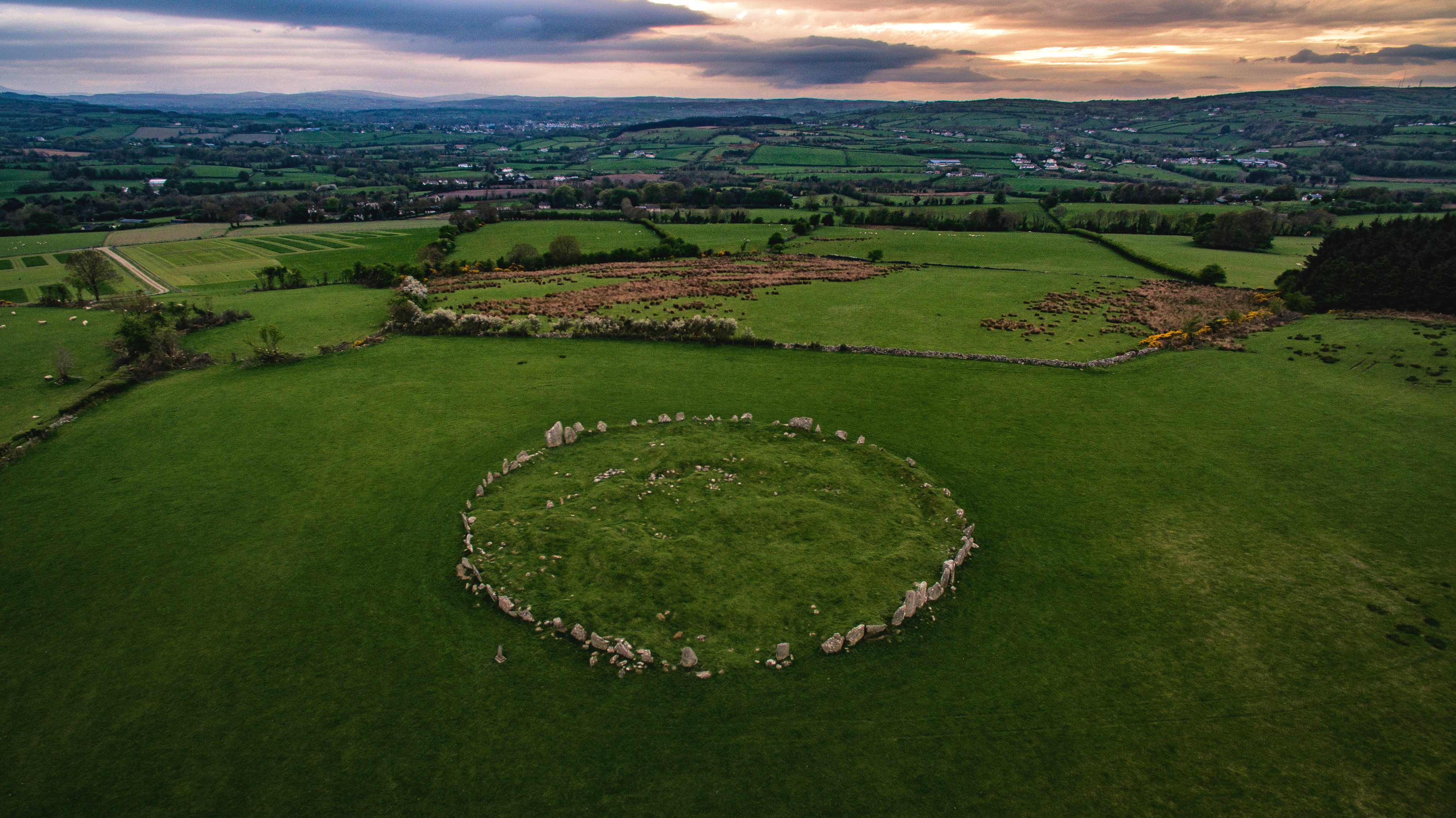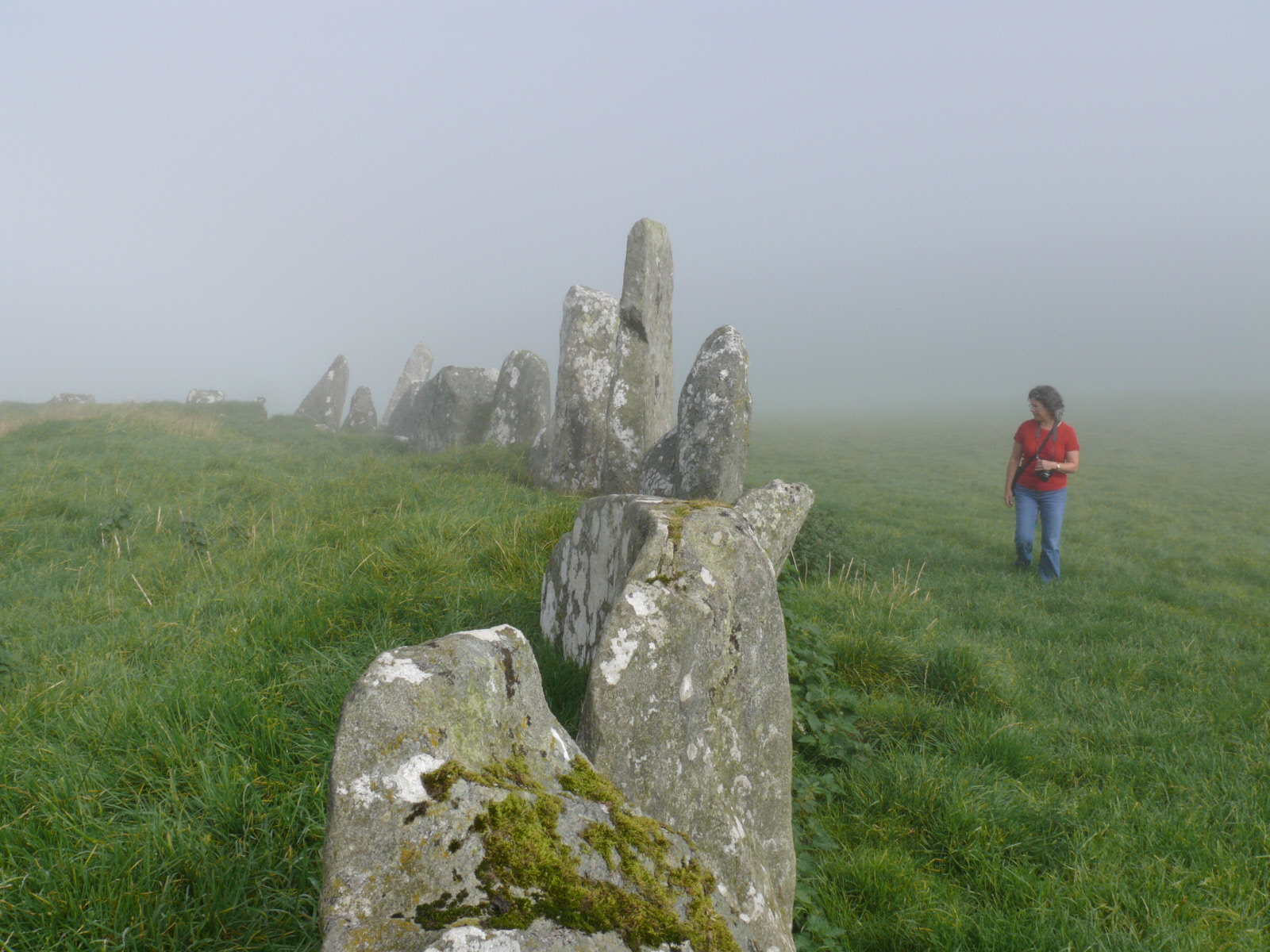Beltany Stone Circle on:
[Wikipedia]
[Google]
[Amazon]


 Beltany is a Bronze Age
Beltany is a Bronze Age


 Beltany is a Bronze Age
Beltany is a Bronze Age stone circle
A stone circle is a ring of standing stones. Most are found in Northwestern Europe – especially in Britain, Ireland, and Brittany – and typically date from the Late Neolithic and Early Bronze Age, with most being built from 3000 BC. The be ...
just south of Raphoe
Raphoe ( ; ) is a historical village in County Donegal, Ireland. It is the main town in the fertile district of East Donegal known as the Laggan, as well as giving its name to the Barony of Raphoe, which was later divided into the baronies of R ...
town in County Donegal
County Donegal ( ; ga, Contae Dhún na nGall) is a county of Ireland in the province of Ulster and in the Northern and Western Region. It is named after the town of Donegal in the south of the county. It has also been known as County Tyrconne ...
, Ireland
Ireland ( ; ga, Éire ; Ulster Scots dialect, Ulster-Scots: ) is an island in the Atlantic Ocean, North Atlantic Ocean, in Northwestern Europe, north-western Europe. It is separated from Great Britain to its east by the North Channel (Grea ...
. It dates from circa 2100-700 BC. There is evidence that it may also have been the sacred site of Neolithic monuments, possibly early passage tomb
A passage grave or passage tomb consists of one or more burial chambers covered in earth or with stone, and having a narrow access passage made of large stones. These structures usually date from the Neolithic Age, and are found largely in Wester ...
s. It overlooks the now destroyed passage tomb complex at Kilmonaster and Beltany is dominated by Croghan Hill to the east on the summit of which there sits a Neolithic mound most likely a passage tomb (though never excavated).
Today Beltany has 64 stones of varying height and width enclosing an earthen platform. The centre is greatly disturbed and most likely was the result of digging by locals in 1700s for available loose stones to build farmsteads and field boundaries. This evidence was given orally to the Ordnance Survey field officers in 1830s which is written into the OS records. It states that locals recalled the removal of vast heaps of stone and sepulchral type graves with bones. The boulder wall close to the circle may support this evidence and the mention in OS early maps of ‘Tops Village’ at the foot of the hill. The enigmatic Stone Circle is situated on the summit of Tops Hill, the anglicized Gaelic word meaning ‘the lighting of a ceremonial torch’. Several stones are cupmarked. One in particular, the triangle stone on NE is decorated with circular incisions or cup marks visible to naked eye. Other stones have what appears to be replicated star constellations. The heavy stones on NW lean outwards possibly from pressure of the earlier debris and boulders removed in 1700s or due to depletion of earthen bank.
This was a ritual site associated with marking the agricultural Celtic year – the summer and winter Solstices and Equinox. The Celtic Ritual Year was in 4 parts – Beltaine (May), Samhain (November) the main parts and Imbolg (February) and Lughnasa (August).
Beltany may be linked to marking both sunrise and sunset at these important ritual and ceremonial events in the year. It may also have a lunar orientation, yet to be calculated.
A single ‘outlier’ stone about 2 metres high stands to the southeast of the circle. It probably had some function related to the rituals or ceremonies in the circle. Or it may be one of the several line standing stones found in fields around the slopes of Tops hill and valley.
A carved stone head (flat to back) is believed to have come from lands around Beltany and thought to have functioned as either a mask or a mould from which ceremonial masks were fashioned in bronze or even gold. It is in the vaults at the National Museum in Dublin. These megaliths indicate that this landscape was marked out and used as a sacred and ritual site for several millennia.
It has been suggested that the name of the site is linked to the Celtic festival of fertility known as 'Beltane
Beltane () is the Gaelic May Day festival. Commonly observed on the first of May, the festival falls midway between the spring equinox and summer solstice in the northern hemisphere. The festival name is synonymous with the month marking the ...
', the anglicised
Anglicisation is the process by which a place or person becomes influenced by English culture or British culture, or a process of cultural and/or linguistic change in which something non-English becomes English. It can also refer to the influen ...
name for the Gaelic
Gaelic is an adjective that means "pertaining to the Gaels". As a noun it refers to the group of languages spoken by the Gaels, or to any one of the languages individually. Gaelic languages are spoken in Ireland, Scotland, the Isle of Man, and Ca ...
May Day
May Day is a European festival of ancient origins marking the beginning of summer, usually celebrated on 1 May, around halfway between the spring equinox and summer solstice. Festivities may also be held the night before, known as May Eve. T ...
festival, commonly held on 1 May and historically, widely observed throughout Ireland
Ireland ( ; ga, Éire ; Ulster Scots dialect, Ulster-Scots: ) is an island in the Atlantic Ocean, North Atlantic Ocean, in Northwestern Europe, north-western Europe. It is separated from Great Britain to its east by the North Channel (Grea ...
, Scotland
Scotland (, ) is a country that is part of the United Kingdom. Covering the northern third of the island of Great Britain, mainland Scotland has a border with England to the southeast and is otherwise surrounded by the Atlantic Ocean to the ...
and the Isle of Man
)
, anthem = "O Land of Our Birth"
, image = Isle of Man by Sentinel-2.jpg
, image_map = Europe-Isle_of_Man.svg
, mapsize =
, map_alt = Location of the Isle of Man in Europe
, map_caption = Location of the Isle of Man (green)
in Europe ...
. In Irish
Irish may refer to:
Common meanings
* Someone or something of, from, or related to:
** Ireland, an island situated off the north-western coast of continental Europe
***Éire, Irish language name for the isle
** Northern Ireland, a constituent unit ...
the name for the festival day is , in Scottish Gaelic
Scottish Gaelic ( gd, Gàidhlig ), also known as Scots Gaelic and Gaelic, is a Goidelic language (in the Celtic branch of the Indo-European language family) native to the Gaels of Scotland. As a Goidelic language, Scottish Gaelic, as well as ...
and in Manx Gaelic
Manx ( or , pronounced or ), also known as Manx Gaelic, is a Gaelic language of the insular Celtic branch of the Celtic language family, itself a branch of the Indo-European language family. Manx is the historical language of the Manx peo ...
.
References
{{DEFAULTSORT:Beltany Stone Circle Stone circles in Ireland National Monuments in County Donegal Tumuli in Ireland